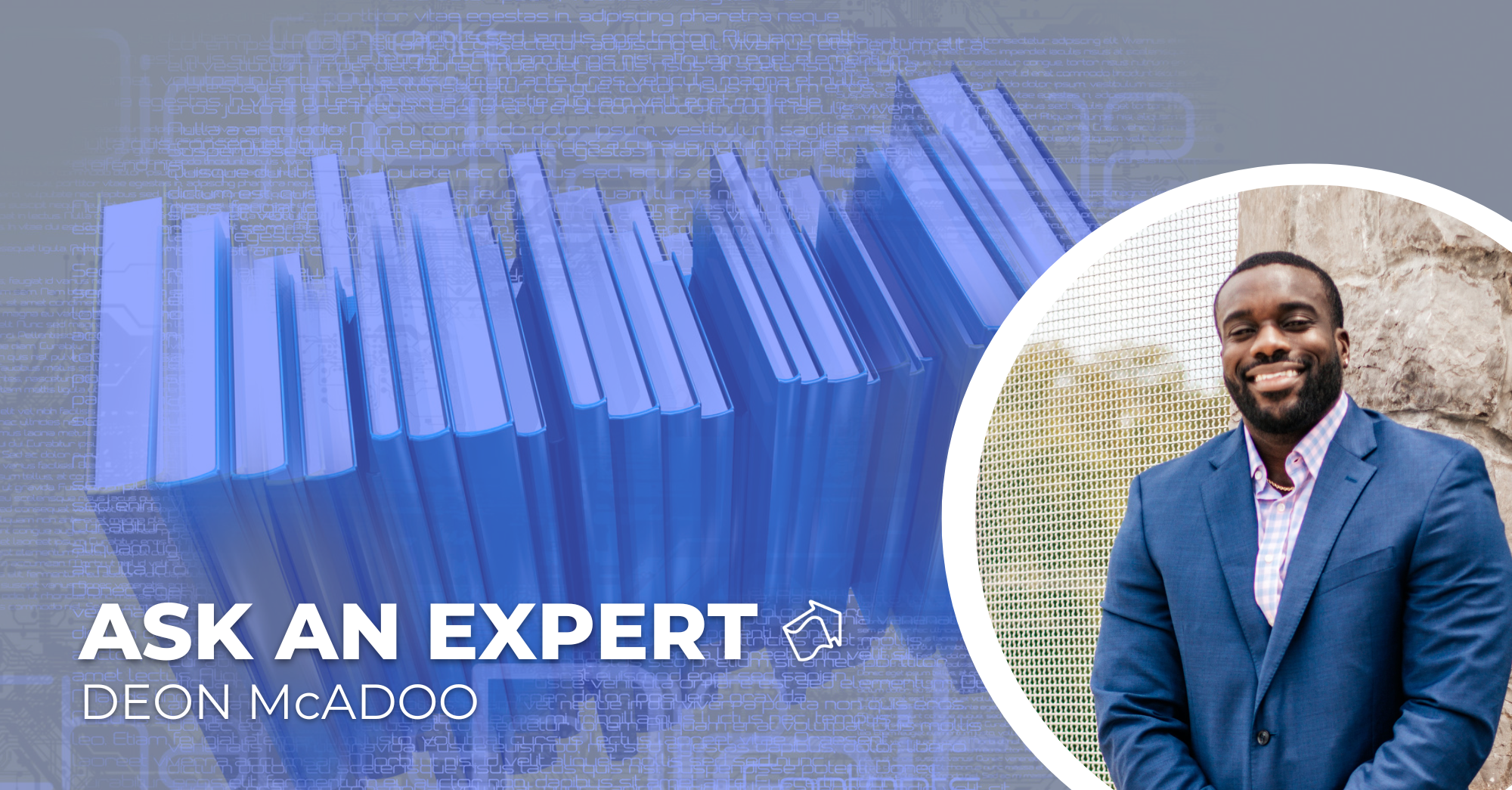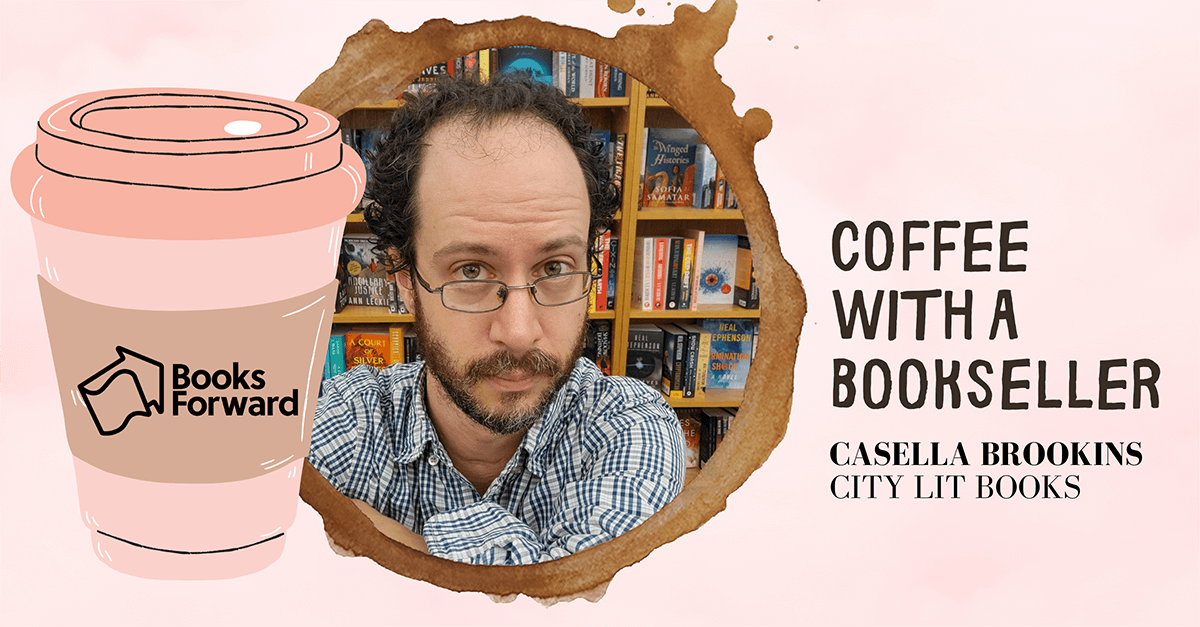1. What’s your favorite area of your bookstore?
It has always been the basement lol. Under normal circumstances – we’re undergoing some downstairs construction and renovation due to some recent flooding – Left Bank is a two-story bookstore, with a robust and lively upstairs, and a quieter downstairs area that houses our used book department and the science fiction/fantasy collection. SFF takes up ⅔ of the longest wall in the room, and I have spent hours, as both customer and employee of Left Bank, perusing the shelves. It feels like you’ve found something a little secret the first time you walk downstairs, and you are immediately confronted with our graphic novel section, which presents an apt visual transition to the fantastic worlds depicted on the covers in the sci-fi/fantasy section. There’s usually a table with some chairs adjacent to the section, so you are welcomed to sit with those covers, to open them, to take a glimpse at a possible future.
2. What’s the coolest book cover that you like to have facing out on the shelves?
I genuinely try to get away with facing out every single book by (MacArthur Genius) NK Jemisin, and I love that our backlist buyer/merchandiser Randy is so willing to let me get away with it. The art is so striking, and often a bit gothic, and gives you somehow not very much but also a tremendous amount about the story it represents. I also am nothing short of obsessed with the cover of They Can’t Kill Us Until They Kill Us by (MacArthur Genius) Hanif Abdurraqib. I mean, it’s a wolf in a track suit and a chain, somehow both approachable and containing a warning, and I can’t think of a better visual metaphor for the wonderful and devastating prose that the book contains.
3. If you had a staff pick for a recent new release, what would it be? Backlist pick?
God’s Children Are Little Broken Things (Arinze Ifeakandu) is this remarkable, heart-rending collection of short stories about (mostly) queer men in modern urban Nigeria, and it broke my heart with characters who are desperate for acceptance, but willing to take so much less.
White Teeth (Zadie Smith) & The Secret History (Donna Tartt) are often, in my mind, vying for the role of my Favorite Book. It’s never entirely clear who’s winning that battle. If you feel the need to slip into the classic “dark academia” text, Donna Tartt’s first novel is a bildungsroman and thinly veiled autobiographical account of her own time at the somewhat infamous Bennington College. If you’d rather be swept into one of the great family dramas of the modern age, a young Zadie Smith is flexing her considerable linguistic muscles in this wonderful unpacking of the role of the ones who love you in the quest for a fulfilling sense of identity, and no one is left behind on the ride.
4. Do you have a strange customer story?
I once had a customer who tried to order a book that had no release date several days in a row. She called every day, pretty close to when we would close, and would ask if I would be able to order the illustrated edition of Harry Potter and the Deathly Hallows. And every time she called, I told her that they’d only released the first few books, and that it probably takes a good bit of time for them to produce. And every time, she would respond, with a morose, “Oh, ok, I just would have figured that book would be out by now.”
5. What author have you been starstruck to meet, or have you gotten to host a fun virtual event?
Bernardine Evaristo was a genuine delight to host. She was exactly the right mix of self-inspired and self-demanding as a creator, and her curious and remarkably generous attitude kept me on my toes throughout the interview. I had already held her in tremendous esteem, but there’s something about being told to get to work on your novel by such an accomplished and down-to-earth artist that really sticks with you.
6. What are some misconceptions people have about working in a bookstore?
I think a lot of folks attach a romantic notion of casually reading and browsing shelves aimlessly to working in a bookstore. But it’s actually quite a lot of work to keep up with inventory, to maintain order on the shelves, to keep up with the various tasks that make it possible for us to point folks towards their next favorite read.
7. What is your least favorite bookstore task? Favorite part about working in a bookstore?
My least favorite task, in the bookstore and in life, is probably cleaning the bathroom. My personal favorites are probably pulling returns or doing inventory details, as they’re opportunities to see all the books that we have to offer our customers. I add so many things to my to-be-read pile whenever I’m doing a task that involves any degree of close shelf reading.
8. Can you recommend an underrated readalike book for one of the store’s top titles? (For example: If your store sells a lot of The Song of Achilles, you might recommend Tin Man.)
We sell a TON of Stuart Turton’s The 7 ½ Deaths of Evelyn Hardcastle and our customers are constantly thrilled by the twisty, perspective-shifting mystery story. To me, a classic version of the locked-room (locked-building?) mystery that I think people have forgotten about is The Westing Game (Ellen Raskin). While technically a middle-grade book, I’ve returned to it maybe a dozen times, and it never fails to deliver, and is great for kids and adults alike. A more adult-oriented suggestion would probably be The Starless Sea (Erin Morgenstern); though not a genre mystery, the layers of understanding that unfurl before your eyes going through this book are as stunning a magic trick as I’ve ever seen.
assistant manager/used book buyer/IT specialist
A former award-winning journalist with national exposure, Marissa now oversees the day-to-day operation of the Books Forward author branding and book marketing firm, along with our indie publishing support sister company Books Fluent.
Born and bred in Louisiana, currently living in New Orleans, she has lived and developed a strong base for our company and authors in Chicago and Nashville. Her journalism work has appeared in USA Today, National Geographic and other major publications. She is now interviewed by media on best practices for book marketing.









 What’s your favorite area of The Wild Detectives?
What’s your favorite area of The Wild Detectives?
 What’s your favorite area of Bodacious Bookstore?
What’s your favorite area of Bodacious Bookstore? 
 What’s the best dedication or first line of a book that you can remember?
What’s the best dedication or first line of a book that you can remember?
 What’s your favorite area of Madison Street Books?
What’s your favorite area of Madison Street Books? Can you recommend an underrated readalike book for one of the store’s top titles?
Can you recommend an underrated readalike book for one of the store’s top titles?
 What’s your favorite area of your bookstore?
What’s your favorite area of your bookstore?
 What’s your favorite area of your bookstore?
What’s your favorite area of your bookstore? Do you have a strange customer story?
Do you have a strange customer story?



